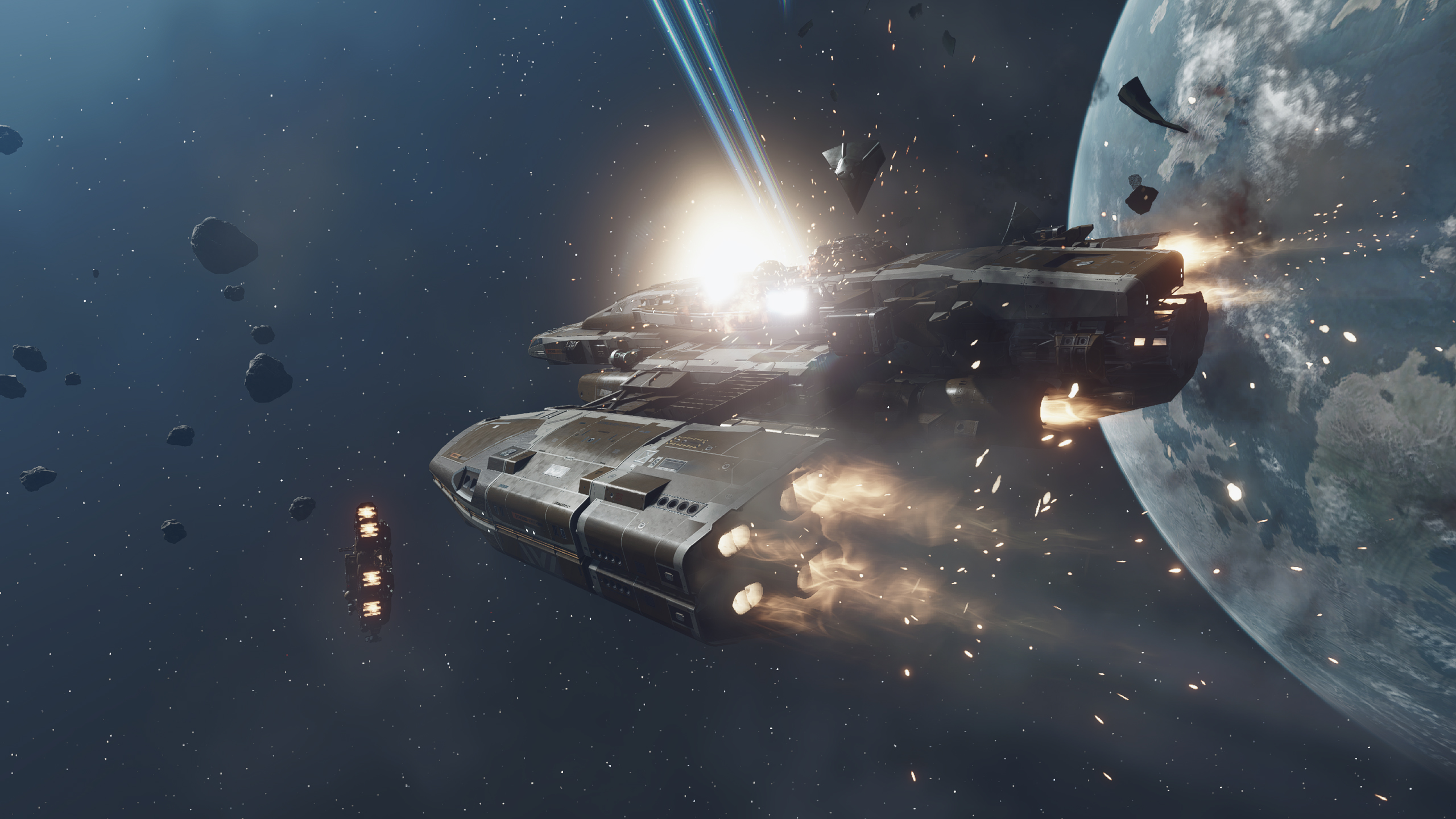The solution to space junk might be space lasers because lasers solve everything obviously
If my early sci-fi obsession taught me anything, it's that most problems can be resolved with a laser.

As any child running around the park holding a plastic raygun will tell you, most issues can be resolved by the correct application of a suitable amount of lasers, preferably of the pew-pew variety. However, one startup is aiming to solve the very real problem of orbital debris by using honest-to-goodness satellite mounted space lasers, which may end up proving once and for all that our childhood instincts were correct.
The satellites are planned to be operated by Orbital Lasers, a startup backed by Japanese satellite operator SKY Perfect JSAT, and have been jointly designed by the operator in collaboration with the Riken research institute (via The Register). The plan is to use a technique called laser ablation to emit a powerful laser beam that vaporises the surface of a targeted piece of debris, and it's the impulse emitted from this vaporisation that can not only prevent it from rotating in its current trajectory, but also be used to decelerate it, causing it to fall into Earth's atmosphere and burn up.
This novel approach is said to have multiple advantages. Firstly, it requires no physical contact between the laser-equipped satellite and its intended prey, which is an immensely difficult thing to co-ordinate at the incredible speeds reached by orbital objects. Even a tiny paint chip can become an immensely dangerous object when travelling at tens of thousands of miles an hour, so minimising the risk of a catastrophic collision between two potentially large objects is a high priority.
Secondly, as the debris is being moved by a laser-created impulse rather than the satellite itself, extra fuel is not required. This should help the project deliver its intended results with lower operating costs than competing methods.
Space debris has become a growing concern in recent years, with more than 25,000 objects larger than 10 cm known to exist in current orbit, which could add to the estimated 100 million objects larger than 1 mm if these larger objects are allowed to collide. Current estimates suggest that the amount of material orbiting the Earth exceeds 9,000 metric tons, making its safe removal a project of gigantic proportions.

Best gaming PC: The top pre-built machines.
Best gaming laptop: Great devices for mobile gaming.
Successful tests of competing methods have been carried out before, like the RemoveDebris mission, which carried out four active space debris removal demonstrations using both a net and a harpoon to capture debris back in 2018. However, no large-scale solution is currently in operation, and the problem is likely only to get worse.
The number of satellites in orbit is increasing, with predicted estimates ranging from 20,000 to 58,000 satellites launched by 2030. SpaceX alone is estimated to have launched more than 5,400 satellites as of last November, and with every launch the increased likelihood of collision with existing space debris, or the risk of a failure to properly dispose of itself by burning up in the atmosphere once its mission is complete, increases.
The biggest gaming news, reviews and hardware deals
Keep up to date with the most important stories and the best deals, as picked by the PC Gamer team.
NASA has already raised concerns with SpaceX after the loss of 40 Starlink satellites due to a geomagnetic storm, in regards to the scale of the Starlink networks rapid expansion and the risks created by potential space debris, and they are far from the only company planning to expand their satellite network in the coming decades.
Here's hoping that space lasers might be the solution to our planetary space-junk woes. Powerful lasers in space used to be the stuff of science fiction fantasy, but now we might be looking at a future where they become necessary to clean up yet another human garbage problem that seems, as things currently stand, very much out of control.

Andy built his first gaming PC at the tender age of 12, when IDE cables were a thing and high resolution wasn't—and he hasn't stopped since. Now working as a hardware writer for PC Gamer, Andy's been jumping around the world attending product launches and trade shows, all the while reviewing every bit of PC hardware he can get his hands on. You name it, if it's interesting hardware he'll write words about it, with opinions and everything.

